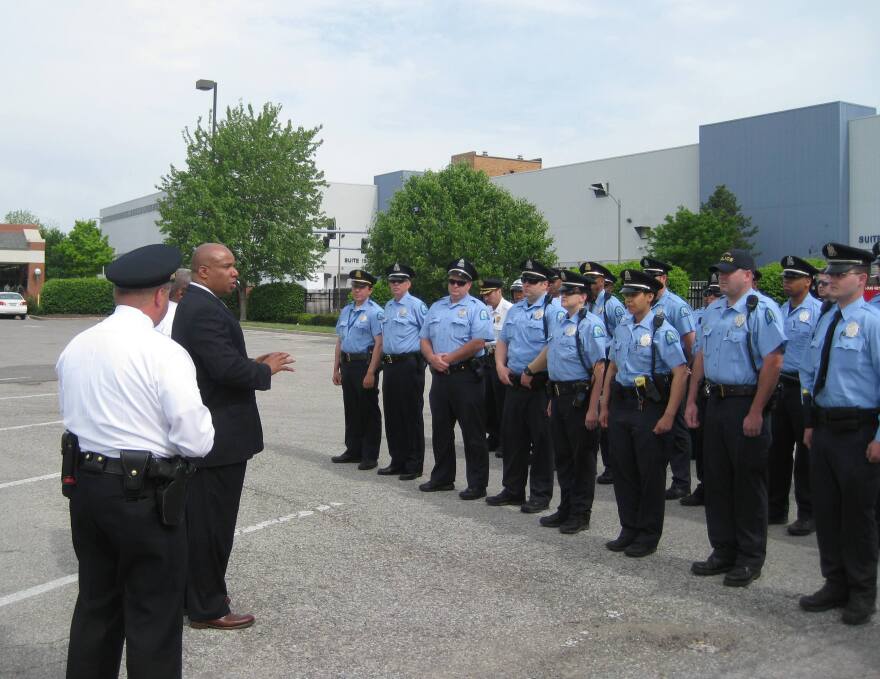Crime in the city of St. Louis continues to be higher in 2015 compared to the numbers from last year.
Statistics released Tuesday by the St. Louis Metropolitan Police show crime was up nearly 14 percent overall in the first six months of 2015 compared to the same period last year, though the rate of increase has slowed each month. Every category of crime except rape and arson was up by double digits.
The biggest increase -- nearly 60 percent -- was in homicides. Police reporting 58 killings through June 2014, compared to 93 year-to-date in 2015.
(NOTE -- the overall crime statistics are released by the department monthly, and go through the end of June. Homicide numbers are updated weekly. There were 92 homicides at the end of June, and 93 as of today.)
James Clark, the vice president of community outreach for the social service agency Better Family Life said he was not surprised by the numbers.
"We are reaping the neglect of the human capital in our more troubled neighborhoods," said Clark. "This does not remedy itself, and the sad part about it is, there’s no remedy present right now. Our neighborhoods are in total disarray, and we are resource providers, we’re moving too slow."
Clark said churches will be a vital part of any successful anti-crime initiative.
"The church is the number one populated institution in our neighborhoods, and the church's charge is to equip individuals and make people better people," Clark said. He is coordinating an effort called "From the Pulpits to the Porches" to get church leaders into their neighborhoods, and said Better Family Life will find a way to provide the needed services like employment training and drug treatment.
_
Homicides by the numbers.
Here is what we know about the city's 93 homicides as of July 7, 2015:
- The vast majority (90) were committed with a gun
- Police have made an arrest in 29 of the cases. That so-called “clearance rate” of 31 percent is well below the 2013 national average of 64 percent.
- Of those 29, the prosecuting attorney has issued charges in 19 cases. Another 8 are “under advisement.” In two cases, the suspect later died.
- The vast majority of both victims and suspects are black men between the ages of 20 to 29.
- The three neighborhoods with the most homicides – Wells-Goodfellow (9), JeffVanderLou (7) and the Greater Ville (9) – have all been the site of so-called “hot-spot policing,” where the department floods the area with officers.
"Homicide in every city is driven by a very small population of very active core offenders," said David Kennedy, the director of the National Network for Safe Communities at the John Jay College of Criminal Justice in New York. "We have spikes when that super-heated street population gets more active. And that can be a set of back-and-forth beefs and vendettas; it can be a perturbation in the drug market; it could be a lot of things."
National research has shown that effective homicide deterrence focuses on "hot people" and "hot places," Kennedy said. In the first approach, social service agencies, law enforcement and community leaders find ways to speak directly to those core offenders.
"What's sort of typically conveyed is, 'We know who you are; we know what you're doing; you are absolutely the highest risk population to get hurt, to get killed, to hurt somebody else, to kill somebody else and to get locked up. Everybody wants that not to happen,'" Kennedy said.
"Hot places" is an even more focused-version of the hot-spot policing championed by St. Louis Metropolitan Police Chief Sam Dotson. It's not neighborhoods that are dangerous, Kennedy said -- it's blocks and corners within neighborhoods.
"The best thinking on this right now says focus as narrowly as you possibly can on the core people and the core places, and really what we want to do is treat everybody else and everywhere else as partners and allies, not as a problem."
Chief Dotson will discuss the crime numbers and crime-fighting strategies Thursday morning when he goes in front of the Public Safety committee. The meeting is at 10 a.m. in room 208 of City Hall.
Follow Rachel Lippmann on Twitter: @rlippmann




